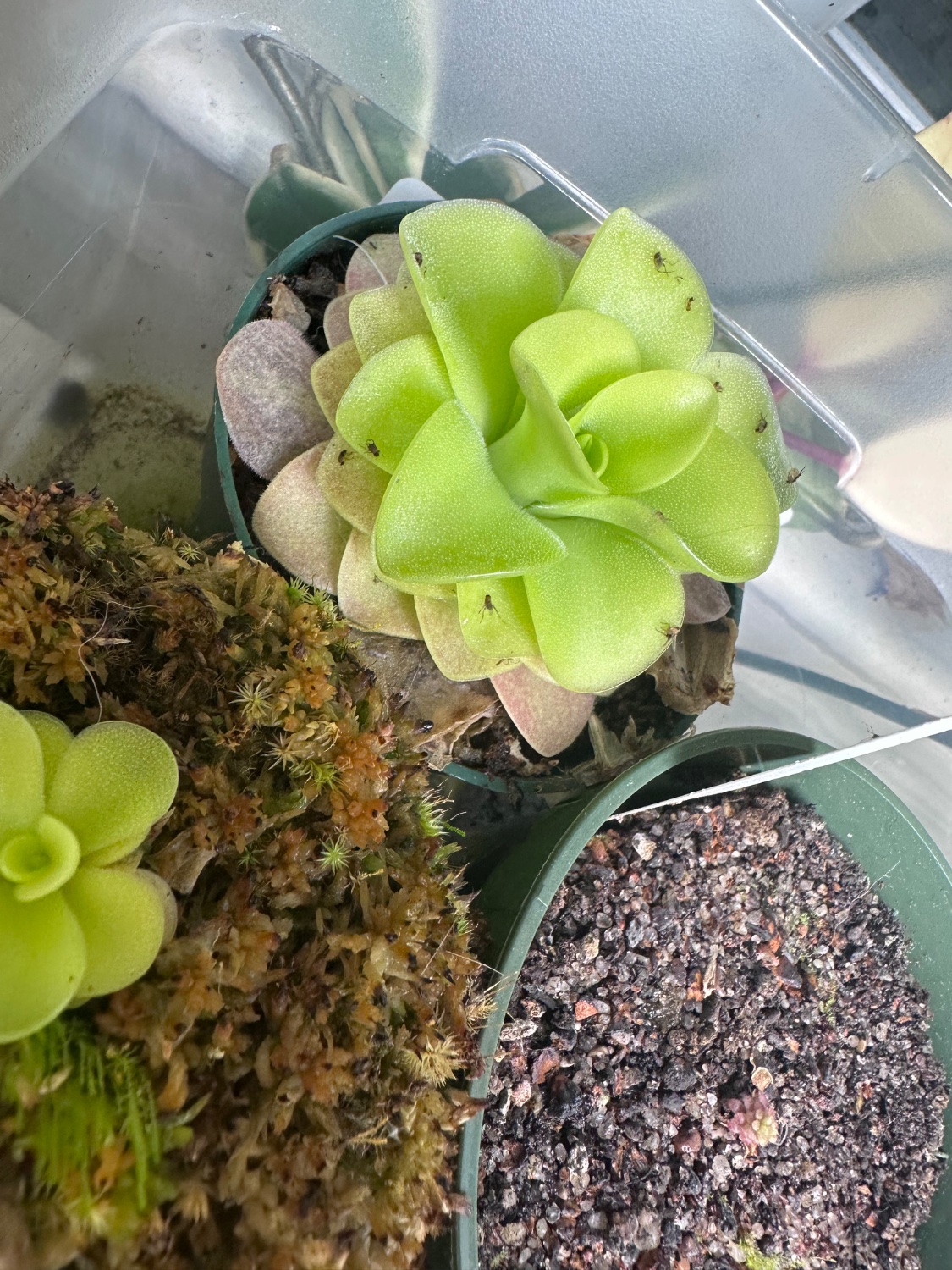Thanks for the info on LECA, good to know and may be a good experiment for me! I have an N. ‘gaya’ that’s just putting out basals like no other and I don’t know what to do with all the babies.
But the leaves I can see on your ping (at least based on the first pic where I can see the leaves a bit better) look like summer leaves still. Winter leaves are more tightly compacted, smaller, and generally not sticky. The winter leaves will also slowly die back as they form new summer leaves, leaf turnover rate is just higher in CPs.
 here’s an example of my P. ‘Hanka’ still fully in winter rosette
here’s an example of my P. ‘Hanka’ still fully in winter rosette
 And my P. ‘Tina’ with mostly winter but some new summer leaves finally starting to emerge
And my P. ‘Tina’ with mostly winter but some new summer leaves finally starting to emerge
 Vs a few other species that are fully in summer foliage now (yes I have a fruit fly/gnat problem right now haha)
Vs a few other species that are fully in summer foliage now (yes I have a fruit fly/gnat problem right now haha)
I will mention the one D. aliciae you showed that caught an ant did look like its crown was starting to grow new leaves and some of the newer ones had a bit of dew so I think it was bouncing back at least. Older sundew leaves also start to lose dew esp if its caught a lot of bugs and expended energy, to gain more energy/nutrients.

I’m not a great photographer but hopefully you can see in that pic how my D. adelae has some very dewy leaves and some quite dry ones (granted this plant is also newer and most of the dry leaves are from its previous environment).
Don’t know if the pictures were helpful at all but hopefully your CPs bounce back! They’re more resilient than people tend to think. Always happy to try and answer any more questions too!
I have always heard warning of squirrels taking a liking for carnivorous plants but have luckily been spared in my years of keeping them! Let me know if you have any questions if you get back to them, happy to help provide any guidance I can!